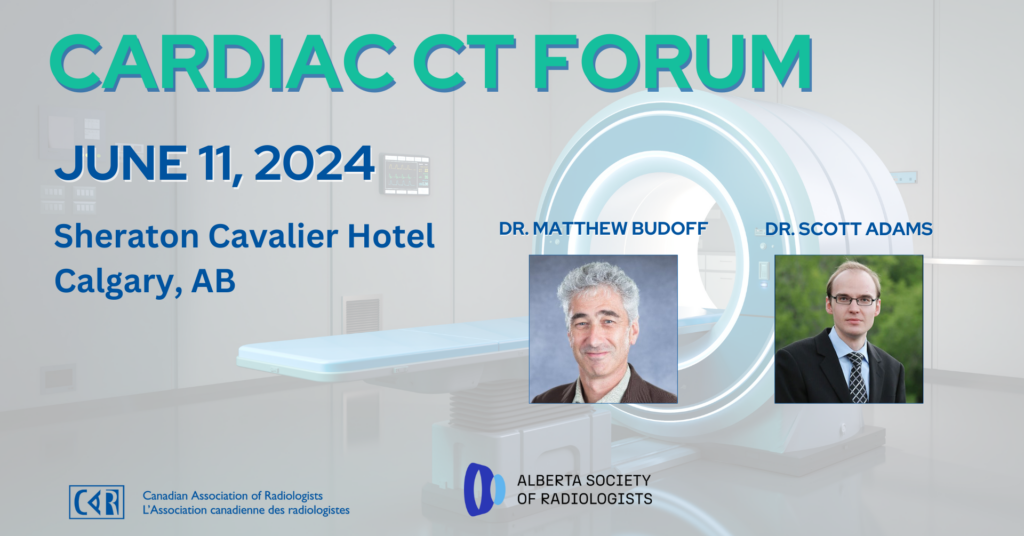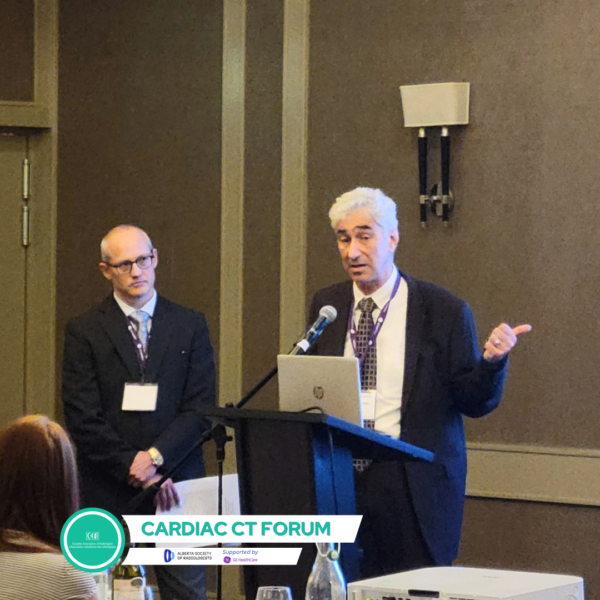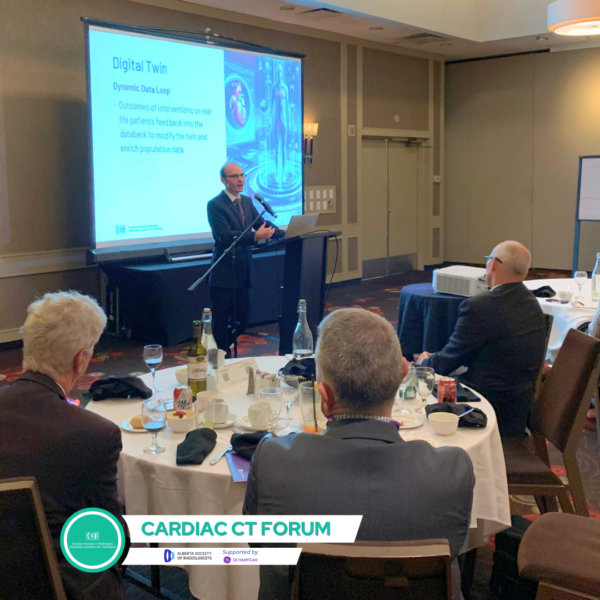Two leading Cardiac CT radiologists discussed innovation and the state of the field at the Cardiac CT Forum, hosted by Calgary, Alberta’s Sheraton Cavalier earlier this month.

The room was packed for the Cardiac CT Forum. Drawing radiologists from Alberta and western Canada. Dinner was served to all guests and attendees earned 1.5 Section 1 Royal College MOC credits.
Dr. Matthew Budoff was one of the two featured speakers, bringing his expertise from the David Geffen School of Medicine at UCLA. He updated the participants to the current state of the field with his presentation called Cardiac CT in 2024.
“It is important to bring clinicians up to speed on everything state of the art in Cardiac CT,” said Dr. Budoff. “This is a rapidly evolving field and keeping up with all the science is challenging for an active clinician. Understanding the role of Cardiac CT in today’s clinical environment and how the guidelines have incorporated this modality are critical for best practices.”

Learning Objectives
-
To improve physician understanding of the uses of cardiac CT in the acute and stable chest pain settings
-
To explain the guidelines recommendations for utility in asymptomatic persons for use of the coronary calcium score
-
To educate physicians to recent studies using cardiac CT to perform non-invasive angiography and best uses of Fractional Flow Reserve by CT (FFRct)
“I hope the audience took away the best practices of cardiac CT, the appropriate uses and clinical guidelines that support cardiac CT as the first line test for chest pain,” noted Dr. Budoff.
The other expert speaker of the evening was Dr. Scott Adams, CAR member from Royal University Hospital in Saskatoon, Saskatchewan. His lecture, Innovations and Insights in Coronary CTA, looked at what can be done now and what is on the horizon.
“Cardiac CT is one of the most quickly growing areas of medical imaging, with a large evidence base demonstrating its impact on the management of cardiovascular diseases,” Dr. Adams remarked. “New developments in AI will further extend the benefits of Cardiac CT, enabling us to extract an increasing amount of information from Cardiac CT images, thereby improving cardiovascular risk stratification and enabling more personalized treatment recommendations.”

Learning Objectives
-
Discuss the application of new imaging technologies such as photon-counting CT for coronary imaging.
-
Discuss staging and classification of coronary artery disease with AI-guided quantitative coronary CTA.
-
Demonstrate applications for AI for coronary CTA to bring greater efficiency and increased quality across the cardiac CT workflow.
“Continuing Professional Development (CPD) opportunities in Cardiac CT – and opportunities for the cardiovascular imaging community to come together to share insights at events such as the Cardiac CT Forum – are critical to fully utilize and advance Cardiac CT for the benefit of our patients,” he added.
The Cardiac CT Forum was made possible through a partnership with the Alberta Society of Radiologists and with the generous support of GE HealthCare.
